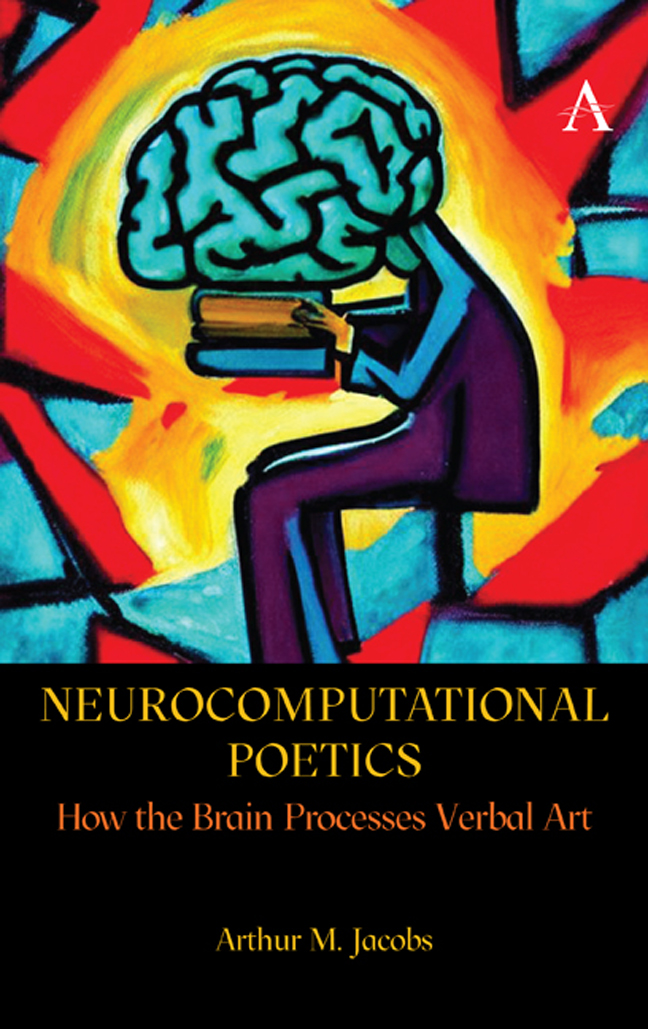Book contents
- Frontmatter
- Contents
- Acknowledgements
- Dedication
- Preface
- 1 Introduction: The Two Boons of an Unnatural Daily Activity
- 2 Models and Methods
- 3 Text Analysis
- 4 Reader and Reading Act Analysis
- 5 Computational Poetics I: Simple Applications
- 6 Computational Poetics II: Sophisticated Applications
- 7 Neurocomputational Poetics I: Upper Route Studies
- 8 Neurocomputational Poetics II: Lower Route Studies
- 9 Conclusions
- References
- Index
2 - Models and Methods
Published online by Cambridge University Press: 01 March 2024
- Frontmatter
- Contents
- Acknowledgements
- Dedication
- Preface
- 1 Introduction: The Two Boons of an Unnatural Daily Activity
- 2 Models and Methods
- 3 Text Analysis
- 4 Reader and Reading Act Analysis
- 5 Computational Poetics I: Simple Applications
- 6 Computational Poetics II: Sophisticated Applications
- 7 Neurocomputational Poetics I: Upper Route Studies
- 8 Neurocomputational Poetics II: Lower Route Studies
- 9 Conclusions
- References
- Index
Summary
If asking the right questions is part of the art of science – those that, if answered, will make a difference and ideally can be answered during an academic career – and if you are engaged in a long-term scientific adventure like reading research, it is generally favourable to work with models in search of answers. They provide theoretical guidance and prevent you from straying in the dark. They put a spotlight on parts of the a priori infinite search space that hypercomplex research objects like language or reading confront you with. This limits your search to a few corners you can shed light on with a few shrewd, testable hypotheses. As a fallibilist, I believe that having to reject a hypothesis is more informative than confirming it, but I know that learning from errors requires more courage and frustration tolerance than enjoying the rewards of having been right again. Of course, in reality, both sides of the game – learning from erroneous predictions and being motivated by (partially) confirmed ones – complement each other just as is the case in life. What drives us always is a mixture of fear of failure and hope of success; with the right balance, you can go far in reaching your goals.
The Neurocomputational Poetics Model (NCPM) of Verbal Art Reception
How would we look for a new law? […]
First, we guess it. [
Then, we compute the consequences of the guess. […]
And then we compare these computation results to […] an experiment […]
If it disagrees with experiment, it's wrong.
And that simple statement is the key to science.
—Lecture by Richard FeynmanAlthough the first publication of my main theoretical torch, the NCPM, happened in 2011, my love story with cognitive and computational modelling started much earlier: during my undergraduate studies at the University of Würzburg in Bavaria when I first learned about Egon Brunswick's lens model.
The World Seen through a Lens or What Bananas and Books Have in Common
The lens model was an early attempt at modelling human perception as a process of correlating sensory cues like the colour of a banana with judgements (and resulting actions) regarding an object's useful properties, for example its degree of ripeness. In the 1930s Brunswick already understood that the brain is a correlation machine, long before the neural network models I use in my research were invented.
- Type
- Chapter
- Information
- Neurocomputational PoeticsHow the Brain Processes Verbal Art, pp. 17 - 56Publisher: Anthem PressPrint publication year: 2023

